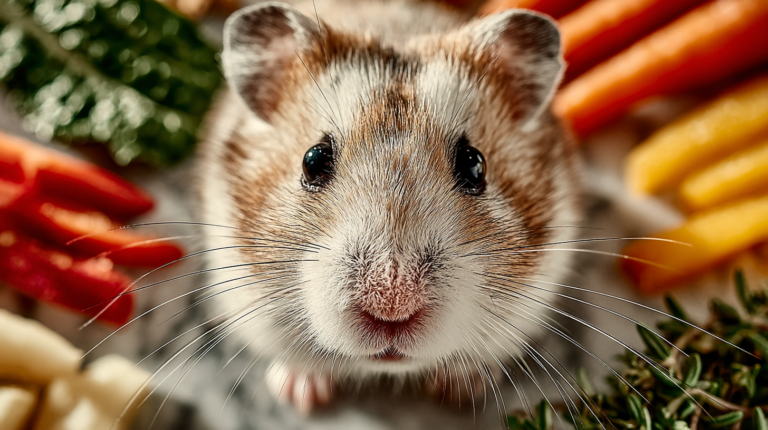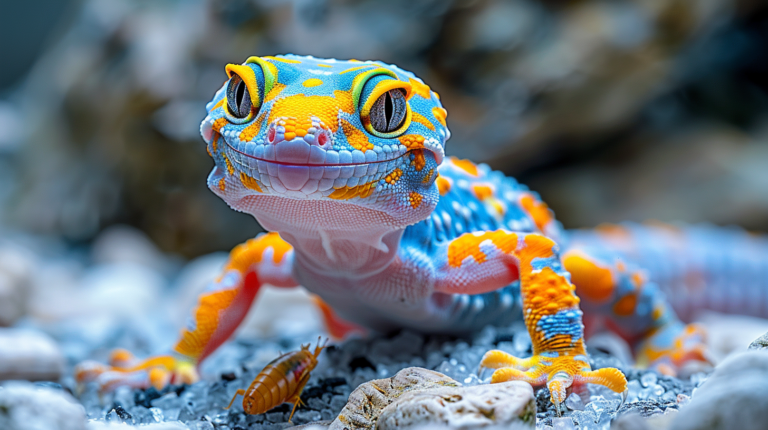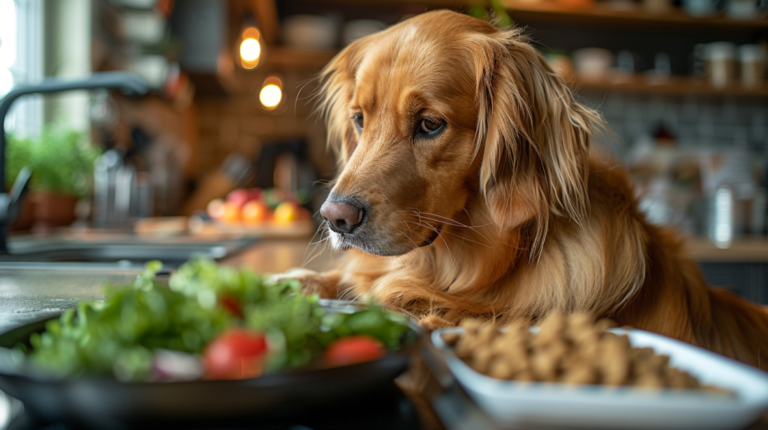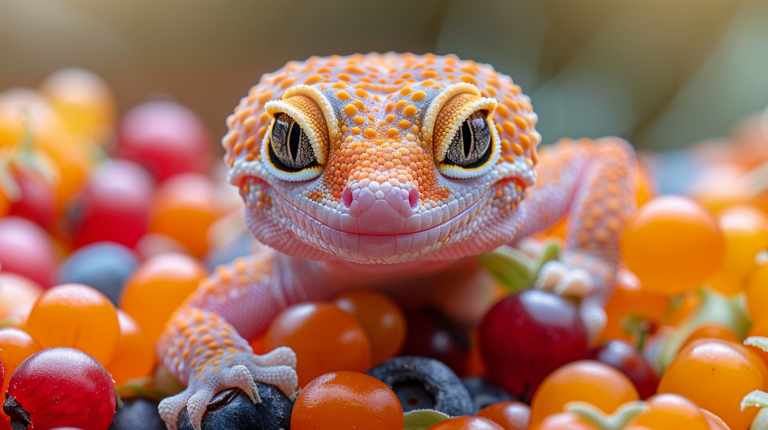Can dogs have marshmallows? Discover 7 toxic reasons why marshmallows are dangerous for dogs, plus safe alternatives and emergency tips for pet owners.
Table of Contents
Picture this: you’re enjoying a cozy evening by the fireplace, roasting marshmallows with your family, when your beloved furry companion gives you those irresistible puppy dog eyes. Before you cave in and share your sweet treat, you need to know the answer to this critical question: can dogs have marshmallows?
The short answer is a resounding no – dogs should never have marshmallows. While these fluffy, sugary treats might seem harmless, they contain multiple ingredients that can be severely toxic to our canine companions. From artificial sweeteners that can cause life-threatening hypoglycemia to high sugar content that leads to obesity and dental problems, marshmallows pose serious health risks that every responsible pet owner needs to understand.
In this comprehensive guide, we’ll explore the seven toxic reasons why marshmallows are dangerous for dogs, discuss what to do if your pet accidentally consumes them, and provide safe alternatives that will satisfy your dog’s sweet tooth without compromising their health. Whether you’re a new pet owner or have years of experience caring for dogs, this information could be crucial for protecting your four-legged family member.

Understanding What Makes Marshmallows Dangerous for Dogs
Before diving into the specific toxic reasons, it’s essential to understand what marshmallows actually contain. Traditional marshmallows are made from sugar, corn syrup, gelatin, and various flavorings and preservatives. However, many modern marshmallows contain additional ingredients that make them even more dangerous for dogs.
The primary concern lies in the artificial sweeteners, particularly xylitol, which has become increasingly common in sugar-free and “diet” marshmallows. Even regular marshmallows pose risks due to their high sugar content, artificial additives, and potential choking hazards.
According to the American Society for the Prevention of Cruelty to Animals (ASPCA), thousands of dogs are treated each year for consuming foods that are toxic to them, with artificial sweeteners being among the top causes of emergency veterinary visits.

The 7 Toxic Reasons Why Dogs Can’t Have Marshmallows
1. Xylitol Poisoning: The Silent Killer
The most dangerous ingredient in marshmallows is xylitol, an artificial sweetener that’s extremely toxic to dogs. While xylitol is safe for humans, it triggers a rapid and severe drop in blood sugar (hypoglycemia) in dogs, which can be fatal within hours of consumption.
When dogs consume xylitol, their bodies mistakenly think they’ve consumed real sugar and release a massive amount of insulin. This insulin surge causes blood sugar levels to plummet dangerously low, leading to:
- Weakness and lethargy
- Loss of coordination
- Vomiting and diarrhea
- Collapse and seizures
- Liver damage and failure
- Coma and potentially death
Real Case Example: In 2023, veterinary emergency clinics reported a 70% increase in xylitol poisoning cases, with many involving dogs who consumed sugar-free marshmallows during camping trips and holiday gatherings.
Dr. Sarah Mitchell, a board-certified veterinary toxicologist, explains: “Even small amounts of xylitol can be lethal for dogs. A 20-pound dog can experience severe hypoglycemia from consuming just one sugar-free marshmallow containing xylitol.”
2. Excessive Sugar Content Leading to Diabetes and Obesity
Regular marshmallows contain approximately 4 grams of sugar per marshmallow – that’s equivalent to a teaspoon of pure sugar. For dogs, this represents an enormous sugar load that their digestive systems aren’t designed to handle.
Long-term consequences of high sugar consumption in dogs include:
- Obesity: Excess sugar converts to fat, leading to weight gain
- Diabetes mellitus: Chronic high sugar intake damages insulin production
- Metabolic syndrome: Disrupted metabolism affects multiple organ systems
- Reduced lifespan: Overweight dogs live an average of 2.5 years less than healthy-weight dogs
According to the Association for Pet Obesity Prevention’s 2024 survey, 59% of dogs in the United States are overweight or obese, with inappropriate treats being a leading contributing factor.
3. Severe Digestive Upset and Gastrointestinal Distress
Dogs’ digestive systems are not equipped to process the high sugar content and artificial ingredients found in marshmallows. Consumption often leads to immediate and severe gastrointestinal symptoms:
Acute symptoms include:
- Explosive diarrhea
- Projectile vomiting
- Severe abdominal pain and cramping
- Excessive gas and bloating
- Loss of appetite
- Dehydration from fluid loss
Chronic digestive issues can develop from repeated exposure:
- Inflammatory bowel disease
- Chronic pancreatitis
- Altered gut microbiome
- Increased susceptibility to other digestive disorders
4. Choking Hazards and Airway Obstruction
Marshmallows present a significant choking risk, especially for smaller dogs or those who tend to gulp their food quickly. The sticky, chewy texture can easily become lodged in a dog’s throat or airway.
Risk factors that increase choking danger:
- Small dog breeds (under 25 pounds)
- Dogs with flat faces (brachycephalic breeds)
- Senior dogs with reduced chewing ability
- Dogs with missing teeth or dental problems
- Excited or anxious eating behaviors
Emergency veterinarian Dr. Michael Chen reports: “We see several cases each month of dogs requiring emergency procedures to remove marshmallows from their airways. The sticky nature of marshmallows makes them particularly dangerous as they can expand and become more difficult to dislodge.”
5. Dental Damage and Oral Health Problems
The high sugar content and sticky consistency of marshmallows create perfect conditions for dental problems in dogs. Unlike humans, dogs don’t brush their teeth daily, making them more susceptible to sugar-related dental issues.
Dental problems caused by marshmallow consumption:
| Problem | Cause | Long-term Impact |
| Tooth Decay | Sugar feeds harmful bacteria | Tooth loss, pain |
| Gum Disease | Bacterial overgrowth | Systemic infections |
| Plaque Buildup | Sticky residue adheres to teeth | Tartar formation |
| Bad Breath | Bacterial fermentation | Social and health issues |
| Oral Infections | Compromised oral environment | Spread to other organs |
Veterinary dentist Dr. Lisa Rodriguez emphasizes: “The sticky sugar in marshmallows adheres to dogs’ teeth for hours, providing continuous fuel for harmful bacteria. This can accelerate dental disease by months or even years.”
6. Allergic Reactions and Food Sensitivities
Many dogs have sensitivities or allergies to ingredients commonly found in marshmallows. These reactions can range from mild discomfort to severe, life-threatening anaphylaxis.
Common marshmallow ingredients that trigger allergic reactions:
- Corn syrup and corn derivatives: Many dogs have corn allergies
- Artificial colors (Red Dye 40, Blue Dye 1): Known allergens and potential carcinogens
- Artificial flavors: Can trigger sensitivities in sensitive dogs
- Preservatives (BHA, BHT): Associated with allergic reactions and health concerns
- Gelatin: Some dogs are sensitive to animal-derived gelatin
Signs of allergic reactions in dogs:
- Excessive scratching and licking
- Red, inflamed skin and hot spots
- Swelling of face, lips, or throat
- Difficulty breathing
- Hives or raised bumps on skin
- Chronic ear infections
- Digestive upset
7. Toxic Artificial Additives and Preservatives
Modern marshmallows contain numerous artificial additives and preservatives that can be harmful to dogs’ health, both in the short and long term.
Dangerous additives commonly found in marshmallows:
Artificial Colors:
- Red Dye 40: Linked to hyperactivity and behavioral issues
- Yellow Dye 6: Associated with allergic reactions
- Blue Dye 1: May cause kidney tumors in sensitive animals
Preservatives:
- BHA (Butylated Hydroxyanisole): Potential carcinogen
- BHT (Butylated Hydroxytoluene): Linked to liver and kidney damage
- Sodium Benzoate: Can form benzene, a known carcinogen
Artificial Flavors:
- Vanillin: Can cause liver stress in large amounts
- Various chemical compounds: Unknown long-term effects on canine health
Dr. Jennifer Walsh, a veterinary nutritionist, states: “The cumulative effect of these artificial additives on dogs’ health is concerning. While one marshmallow might not cause immediate harm from additives alone, regular exposure can contribute to chronic health issues including liver disease, kidney problems, and even cancer.”
What to Do If Your Dog Eats Marshmallows

If your dog has consumed marshmallows, time is critical. The severity of the situation depends on several factors: the number of marshmallows consumed, your dog’s size, whether the marshmallows contained xylitol, and how long ago they were consumed.
Immediate Steps to Take:
Step 1: Don’t Panic, But Act Quickly
- Remain calm to make clear decisions
- Note the time of consumption
- Identify the type and quantity of marshmallows
Step 2: Check the Ingredients
- Look for xylitol on the package
- If xylitol is present, this is a veterinary emergency
- Take photos of the ingredient list for the veterinarian
Step 3: Contact Your Veterinarian Immediately
- Call your regular vet or emergency clinic
- Provide specific details about consumption
- Follow their instructions exactly
Step 4: Monitor Your Dog Closely
- Watch for signs of distress or poisoning
- Keep your dog calm and restrict activity
- Do not induce vomiting unless specifically instructed by a veterinarian
Emergency Warning Signs:
Seek immediate veterinary care if your dog shows any of these symptoms:
- Vomiting or retching
- Diarrhea or loose stools
- Lethargy or weakness
- Loss of coordination
- Difficulty breathing
- Pale gums
- Seizures or tremors
- Collapse
Safe Alternatives to Marshmallows for Dogs

Just because dogs can’t have marshmallows doesn’t mean they can’t enjoy special treats. There are numerous dog-safe alternatives that can satisfy your pet’s desire for something sweet and special.
Healthy Natural Treats:
Fruits (in moderation):
- Apple slices (remove seeds and core)
- Blueberries (excellent antioxidants)
- Banana pieces (high in potassium)
- Watermelon chunks (seedless, great for hydration)
- Strawberries (vitamin C boost)
Vegetables:
- Carrot sticks (great for dental health)
- Sweet potato chips (baked, not fried)
- Green beans (low calorie, high fiber)
- Pumpkin pieces (good for digestion)
Commercial Dog-Safe Sweet Treats:
Recommended brands and products:
- Freeze-dried fruit treats
- Sweet potato chews
- Carob-based treats (dog-safe chocolate alternative)
- Honey-sweetened dog cookies (in moderation)
- Frozen fruit puree treats
DIY Dog-Safe “Marshmallow” Alternatives:
Recipe 1: Frozen Yogurt Bites Ingredients:
- 1 cup plain Greek yogurt (unsweetened)
- 2 tablespoons natural peanut butter (xylitol-free)
- 1 mashed banana
Instructions:
- Mix all ingredients thoroughly
- Pour into ice cube trays or silicone molds
- Freeze for 2-4 hours
- Serve as special treats
Recipe 2: Sweet Potato Marshmallow Substitutes Ingredients:
- 2 large sweet potatoes
- 1 tablespoon coconut oil
- 1 teaspoon cinnamon (optional)
Instructions:
- Bake sweet potatoes until soft
- Mash with coconut oil and cinnamon
- Form into small, marshmallow-sized portions
- Dehydrate or bake at low temperature until chewy
Prevention Strategies: Keeping Your Dog Safe

Prevention is always better than treatment when it comes to protecting your dog from toxic foods. Implementing these strategies will help ensure your pet stays safe from marshmallow-related dangers.
Home Safety Measures:
Kitchen Safety:
- Store all marshmallows in secure, dog-proof containers
- Keep marshmallows on high shelves or in closed cabinets
- Never leave marshmallow packages on counters or tables
- Educate all family members about the dangers
During Gatherings and Holidays:
- Inform guests about your dog’s dietary restrictions
- Provide a list of safe treats guests can offer your dog
- Consider using baby gates to restrict access to food areas
- Keep emergency veterinary contact information readily available
Training and Behavior Management:
Essential Commands:
- “Leave it” – crucial for preventing consumption of dangerous items
- “Drop it” – important if your dog picks up something harmful
- “Stay” – helps maintain distance from food preparation areas
- “Come” – ensures you can recall your dog from dangerous situations
Environmental Management:
- Use puzzle toys to keep your dog occupied during food preparation
- Create designated safe spaces for your dog during parties
- Provide appropriate chew toys to redirect natural chewing instincts
- Establish consistent feeding schedules to reduce food-seeking behavior
The Science Behind Why Dogs React Differently to Sugar

Understanding the physiological differences between dogs and humans helps explain why marshmallows are so dangerous for our canine companions.
Metabolic Differences:
Human vs. Canine Sugar Processing:
- Humans have evolved to process various sugars efficiently
- Dogs’ ancestors (wolves) consumed minimal simple sugars
- Canine pancreas is less equipped to handle sugar spikes
- Dogs have different insulin sensitivity compared to humans
Evolutionary Perspective: Wild canines consume primarily protein and fat, with carbohydrates coming mainly from the stomach contents of prey animals. This evolutionary background means domestic dogs retain digestive systems optimized for meat consumption, not sugar processing.
Size Matters: Dosage and Toxicity:
The concept of “dose makes the poison” is particularly relevant when discussing marshmallow toxicity in dogs. What might be a minor indulgence for a human can represent a massive sugar load for a small dog.
Comparative Analysis:
- A single marshmallow for a 10-pound dog is equivalent to a human consuming 15-20 marshmallows
- Xylitol toxicity occurs at doses as low as 0.1 grams per kilogram of body weight
- Regular marshmallows contain 10-50 times the recommended daily sugar intake for dogs
Long-Term Health Implications
Regular consumption of inappropriate treats like marshmallows can have serious long-term consequences for dogs’ health and quality of life.
Chronic Health Conditions:
Diabetes Mellitus in Dogs: Canine diabetes is increasingly common, with diet being a significant contributing factor. Dogs who regularly consume high-sugar treats are at elevated risk for developing this serious condition, which requires lifelong management and can significantly reduce lifespan.
Obesity and Related Complications:
- Joint problems and arthritis
- Heart disease and reduced cardiovascular function
- Respiratory difficulties
- Increased surgical and anesthetic risks
- Heat intolerance and exercise limitations
Dental Disease Progression: Periodontal disease affects over 80% of dogs by age three, and sugar consumption accelerates this process. Advanced dental disease can lead to:
- Systemic bacterial infections
- Heart, liver, and kidney damage
- Chronic pain and reduced quality of life
- Expensive dental procedures and tooth extractions
Expert Recommendations and Professional Guidelines
Leading veterinary organizations have established clear guidelines regarding sugar consumption in dogs, emphasizing the importance of species-appropriate nutrition.
American Veterinary Medical Association (AVMA) Guidelines:
The AVMA recommends that dog treats should:
- Comprise no more than 10% of daily caloric intake
- Be specifically formulated for canine consumption
- Avoid artificial sweeteners, especially xylitol
- Support rather than compromise nutritional goals
Board-Certified Veterinary Nutritionist Recommendations:
Dr. Amanda Foster, DVM, DACVN, emphasizes: The best treats for dogs are those that provide nutritional value while satisfying their natural instincts. Marshmallows offer no nutritional benefits and pose multiple health risks. Pet owners should focus on high-quality, species-appropriate treats that support their dog’s overall health and wellbeing.
Understanding Pet Insurance and Emergency Costs
The financial impact of marshmallow toxicity can be substantial, making prevention even more critical for pet owners.
Typical Emergency Treatment Costs:
Xylitol Poisoning Treatment:
- Emergency examination: $150-$300
- Blood work and monitoring: $200-$500
- IV fluid therapy: $300-$600
- Hospitalization (24-48 hours): $800-$2,000
- Liver function monitoring: $400-$800
- Total estimated cost: $1,850-$4,200
Digestive Upset Treatment:
- Examination and diagnosis: $100-$200
- Supportive care and medications: $150-$400
- Follow-up visits: $75-$150
- Total estimated cost: $325-$750
These costs emphasize the importance of prevention and the value of pet insurance for unexpected emergencies.
Can Dogs Have Marshmallows (FAQ)
Can dogs have mini marshmallows?
No, mini marshmallows are just as dangerous as regular-sized marshmallows for dogs. They contain the same toxic ingredients, including potentially xylitol, high sugar content, and artificial additives. The smaller size might even increase choking risk for some dogs, as they may be more likely to swallow them whole without chewing.
What should I do if my dog ate marshmallows and seems fine?
Even if your dog appears normal after eating marshmallows, you should still contact your veterinarian. Some symptoms of marshmallow toxicity, particularly from xylitol, can be delayed. Your vet can advise whether monitoring at home is sufficient or if immediate treatment is necessary based on your dog’s size, the quantity consumed, and the type of marshmallows.
Are there any marshmallows that are safe for dogs?
No commercially available marshmallows are safe for dogs. Even “natural” or “organic” marshmallows contain high sugar levels that are inappropriate for canine consumption. Some may still contain xylitol or other artificial sweeteners. It’s best to avoid all marshmallows and choose dog-specific treats instead.
How long does it take for xylitol poisoning symptoms to appear?
Xylitol poisoning symptoms can appear within 10-60 minutes of consumption, though some dogs may not show signs for up to 12 hours. Hypoglycemia typically occurs first, followed by potential liver damage 12-72 hours later. This is why immediate veterinary attention is crucial, even if your dog seems fine initially.
Can I give my dog marshmallows during camping or special occasions?
Absolutely not. Special occasions are actually when dogs are at highest risk because owners may be more likely to share human food. Instead, bring special dog-safe treats for these occasions. Many companies make camping-appropriate dog treats that won’t spoil and can make your pet feel included in the celebration safely.
What’s the difference between xylitol poisoning and regular sugar upset in dogs?
Xylitol poisoning is a medical emergency that can cause rapid hypoglycemia, liver damage, and death within hours. Symptoms include weakness, vomiting, loss of coordination, and collapse. Regular sugar upset typically causes digestive symptoms like diarrhea, vomiting, and stomach discomfort, which while unpleasant, are generally not immediately life-threatening. However, both situations require veterinary attention.
Creating a Pet-Safe Holiday Environment
Holidays and special occasions often involve marshmallows, making these times particularly risky for dogs. Creating a comprehensive safety plan helps ensure your pet stays healthy during celebrations.
Holiday Safety Checklist:
Before the Event:
- Remove all marshmallows and marshmallow-containing foods from accessible areas
- Prepare dog-safe alternatives for your pet
- Brief all guests on what foods are dangerous for dogs
- Establish a designated safe area for your dog
- Have emergency veterinary contacts readily available
During the Event:
- Monitor your dog closely around food preparation and eating areas
- Assign a family member to supervise your dog’s interactions with guests
- Keep your dog’s regular feeding schedule to reduce food-seeking behavior
- Dispose of food waste immediately in secure containers
- Watch for signs that guests may be sharing inappropriate foods
After the Event:
- Thoroughly clean all areas where food was present
- Check for dropped marshmallows or other dangerous foods
- Monitor your dog for 24-48 hours for any signs of illness
- Return to normal feeding routines promptly
The Role of Education in Pet Safety
Many marshmallow-related poisonings occur because pet owners simply don’t know the risks. Education plays a crucial role in preventing these dangerous situations.
Community Awareness Initiatives:
Veterinary Practice Education: Many veterinary clinics now provide specific educational materials about holiday food dangers, including marshmallows. These resources help pet owners make informed decisions about treats and emergency preparedness.
Social Media and Online Resources: Pet safety organizations use social media platforms to share timely reminders about seasonal dangers, reaching pet owners when they’re most likely to encounter these risks.
School and Community Programs: Some communities have implemented pet safety education programs that teach children about appropriate treats for pets, helping create a generation of more informed pet owners.
Research and Future Developments
Ongoing research continues to reveal new information about the effects of various foods on canine health, including the long-term impacts of sugar consumption and artificial sweetener toxicity.
Recent Research Findings:
Xylitol Toxicity Studies: Recent veterinary research has identified that even smaller amounts of xylitol than previously thought can cause problems in sensitive dogs. This has led to updated emergency protocols and more aggressive treatment recommendations.
Artificial Additive Effects: New studies are examining the cumulative effects of artificial colors, flavors, and preservatives on canine health, with preliminary findings suggesting links to behavioral changes and chronic health conditions.
Obesity Prevention Research: Longitudinal studies on canine obesity are providing clearer guidelines on appropriate treat consumption and its relationship to overall health outcomes.
For more expert pet care tips and product recommendations, visit BlithePet.com — your trusted source for pet wellness.
Conclusion
The question “can dogs have marshmallows?” has a clear and definitive answer: absolutely not. The seven toxic reasons we’ve explored – from potentially fatal xylitol poisoning to long-term health complications from excessive sugar consumption – demonstrate why marshmallows should never be given to dogs under any circumstances.
As responsible pet owners, our role is to protect our furry family members from foods that can harm them, even when they give us those irresistible pleading looks. The risks associated with marshmallows far outweigh any momentary pleasure your dog might experience from consuming them.
Remember that keeping your dog safe doesn’t mean depriving them of special treats. There are numerous dog-safe alternatives that can make your pet feel included in celebrations and special occasions without compromising their health. From frozen fruit treats to homemade sweet potato bites, you can show your love for your dog in ways that support their wellbeing.
Prevention remains the best strategy for protecting your dog from marshmallow-related dangers. By implementing proper storage practices, educating family members and guests, and having emergency plans in place, you can create a safe environment where your dog can thrive.
If you ever find yourself in a situation where your dog has consumed marshmallows, remember that quick action can make the difference between a minor scare and a tragic outcome. Don’t hesitate to contact your veterinarian immediately – it’s always better to err on the side of caution when it comes to your pet’s health.
The bond between humans and dogs is built on love, trust, and care. Part of that care involves making informed decisions about what we feed our companions. By understanding why marshmallows are dangerous and choosing appropriate alternatives, we honor that bond and help ensure our dogs live long, healthy, and happy lives.
Have a similar experience with your pet? Share it in the comments below!





